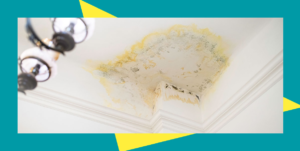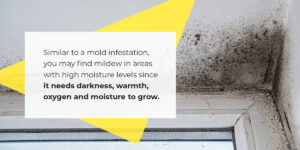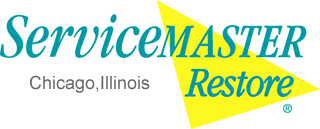
Are mold and mildew the same? While they are both fungi commonly found in our homes, there are clear distinctions between them. Understanding the differences between mold and mildew will help you know which type of fungus you have in your home and how best to get rid of it.
What Is Mold?
We use the term “mold” to refer to a group of fungi commonly found in food and wet materials. These fungi produce a lot of spores and can be found both indoors and outdoors. When outdoors, mold can live in plants, soil and dead or decaying matter. For indoors, mold only occurs where moisture is present. For example, if there’s water damage, dampness or prolonged humidity.
Mold is characterized by fuzzy spots and can be many different colors. Some of the most common types of molds are:
- Cladosporium. You typically find this mold on or around soil, plants and other damp areas.
- Penicillium. This mold appears blueish-greenish and is commonly found in food. Penicillium can also be used to make antibiotics.
- Aspergillus. You can commonly find this in dust, soil and plants.
Potential Damages
Mold is usually not a problem unless the spores land on a damp spot and begin growing. As it grows, mold produces allergens, irritants and sometimes potentially toxic substances. These spores can cause allergic reactions such as sneezing, red eyes or skin rashes if inhaled. People with asthma may also develop asthma attacks after inhaling spores.
If mold grows on your personal items, such as clothing and furniture, you’ll need to get rid of it as soon as possible before it spreads. In addition to causing allergic reactions, mold can damage sections of your home, like your carpentry.
Prevention and Removal

To prevent mold build up, the key factor is to control moisture levels. Open windows, run air conditioners and use bathroom fans after showering to reduce humidity and increase ventilation.
Acting quickly is essential to mitigating your mold problem. For example, if you have a leaking bathroom tap, you’ll need to fix it before moisture spreads the mold fungus. If there currently isn’t a visible mold problem around the leaking tap, it can happen quickly.
If the mold in your home has developed over a large area, treating it yourself can be challenging. In this case, you may need to contact professionals who specialize in mold remedial services.
What Is Mildew?
While mildew is also a fungus, it belongs to a different class. You can find mildew on clothing, plants and other organic materials. There are two main types of mildew:
- Powdery mildew is grayish-white in color. It spreads when there are high humidity levels.
- Downy mildew can appear as gray, bluish, white or violet patches.
Potential Damages
If you breathe in the mildew spores, you could experience symptoms similar to mold exposure, such as eye, nose or throat irritation, headaches and wheezing.
Like mold, mildew develops in high-humidity conditions. If you suspect you have a mildew problem, you can look for signs of discoloration on your bathroom, kitchen and basement walls.
Prevention and Removal
Preventing mildew starts with a thorough inspection. Similar to a mold infestation, you may find mildew in areas with high moisture levels since it needs darkness, warmth, oxygen and moisture to grow.
If the mildew is just over a small area, you can quickly treat it with a scrubbing brush, water and store-bought cleaner. If it is present over a large area, it’s best to hire skilled professionals who will find the root cause of the problem so you can get rid of it for good.
Mold vs. Mildew: Similarities and Differences
Before you can effectively treat either type of fungus, you need to know which type you’re dealing with.
Appearance
Both mold and mildew thrive in dark, damp conditions like basements and crawlspaces. So, how do you tell the difference between mold and mildew?
Mold:
- Can be black, green, blue or sometimes orange.
- Is typically fuzzy.
Mildew:
- Is generally white or gray in color but may turn brown or yellow over time.
- is typically flat and powdery.
Health Effects of Mold vs. Mildew
While mold and mildew can cause similar allergic reactions, mildew tends to be less severe and easier to treat. Symptoms of exposure to either of them may include:
- Sneezing
- Runny nose
- Wheezing
- Itchy eyes
How to Get Rid of Mold or Mildew In Your Home
Preventing mold and mildew growth involves:
- Increasing airflow in your home. Using an air conditioner or a simple fan and opening windows and doors between rooms can help with ventilation. Remember that the key to preventing spreading is to allow air to flow in and out.
- Reducing humidity levels. If you live in a high-humidity area, opening doors or windows may not always be effective. In this situation, you may want to invest in a dehumidifier, which helps to remove moisture from the air.
- Cleaning frequently. Regularly clean each room around the house, paying attention to kitchens, bathrooms and basements. Throw away any rotten or expired produce as soon as necessary.
- Addressing leaks. If you notice any leaks, repair them immediately to avoid wet spots developing around the areas and, as a result, mold or mildew. Dry the area thoroughly with fans and towels.
- Calling in the experts. If you detect mold or mildew growing in your home, call the experts. They’ll start with a proper assessment of the area to help you understand what you’re dealing with. They can help you correct your mold and mildew problem and develop a plan for preventing future issues.
ServiceMaster of Lincoln Park Can Help With Your Mold Remediation Needs
It’s challenging to get rid of mold or mildew by yourself. You risk aggravating any allergic symptoms you may be experiencing, and preventing the fungi from returning can be difficult in high-humidity areas.
Reaching out to a mold remediation company like ServiceMaster of Lincoln Park can help. We don’t just clean up the affected area. We get to the root cause of the problem to help you get rid of it for good.
If you suspect you may have an infestation, our dedicated team of experts will:
- Use tools to assess your home’s temperature and overall humidity.
- Remove all material with molds and any items that may be contaminated.
- Follow procedures guided by the Institute of Inspection Cleaning and Restoration Certification (IICRC) and the Environmental Protection Agency (EPA) to clean and prevent future mold growth.
Contact us today, and we’ll help you get your home back.


